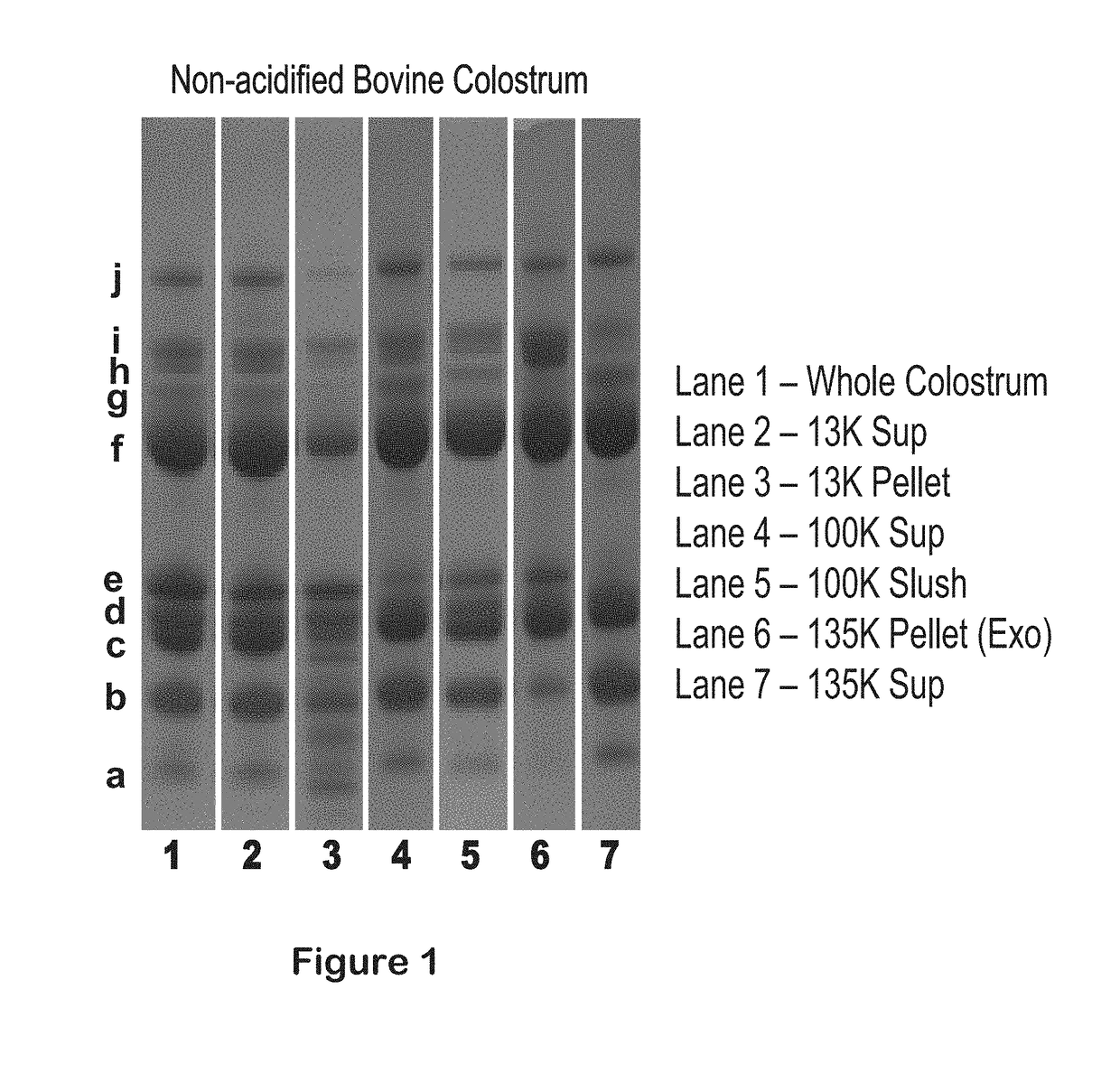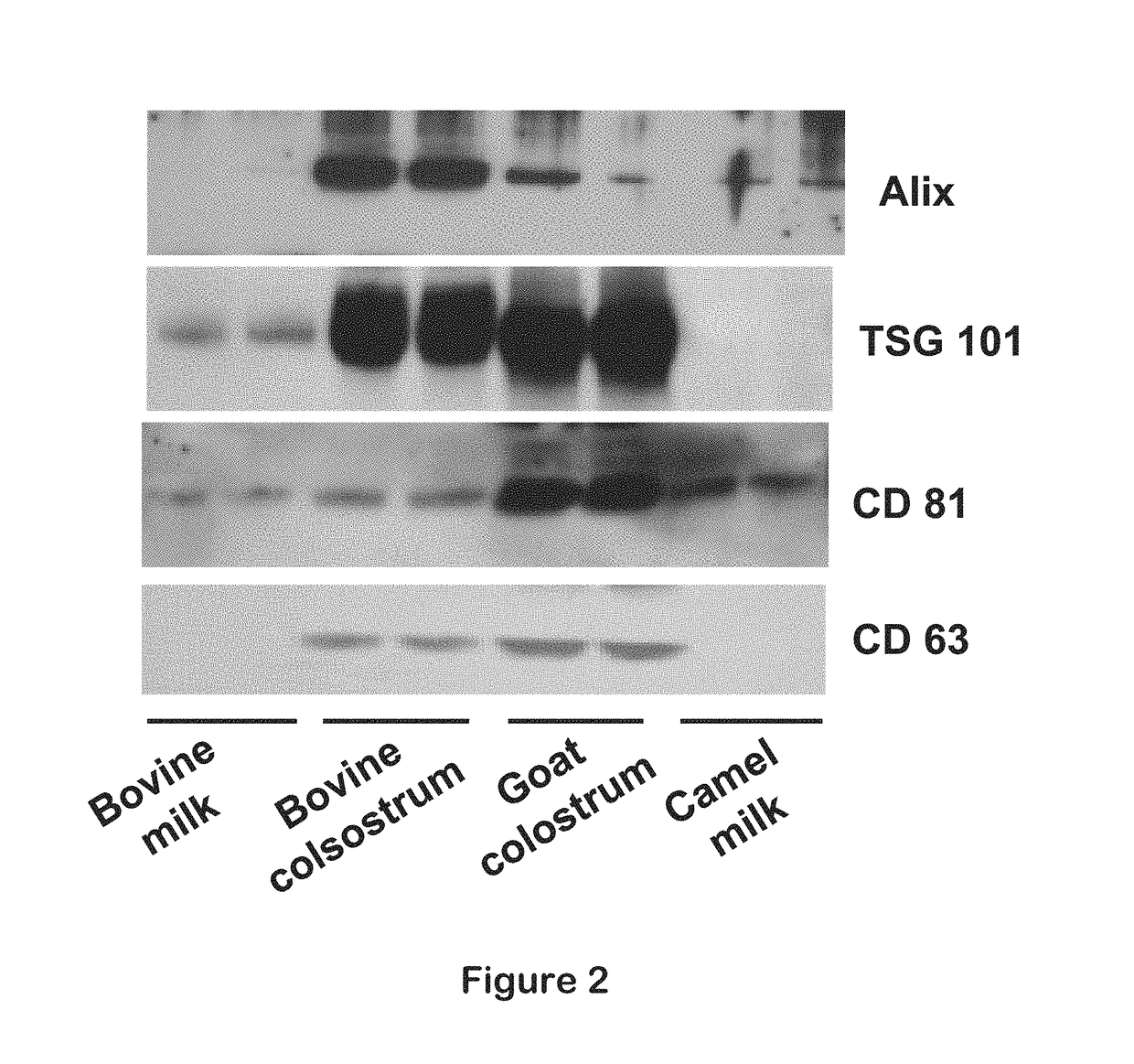Isolation of exosomes from colostrum powder and exosomal drug formulations using the same
a technology of colostrum and exosomes, which is applied in the direction of medical preparations, granular delivery, unknown materials, etc., can solve the problems of poor oral absorption/bioavailability, toxic or intranslatable high doses, and none of the clinical needs have been m
- Summary
- Abstract
- Description
- Claims
- Application Information
AI Technical Summary
Benefits of technology
Problems solved by technology
Method used
Image
Examples
example 2
[0021]The exosome isolation method of Example 1 is used with 5 wt % colostrum to isolate exosomes from bovine colostrum powder obtained from different batches and / or different suppliers. For demonstration purposes, thirteen replicates were run representing colostrum powder from two different sources and three different lots or batches. To allow for direct comparison, 2 L of 5 wt % colostrum suspension was used for each exosome isolation. In each case, the resulting exosome pellet obtained was largely transparent. Measurement of the protein content of the exosomes by standard BCA assay revealed that 2 L of 5 wt % colostrum (or 100 g colostrum powder) yielded about from about 1.2 g exosomal proteins or 1.2% to about 3.0 g exosomal proteins or 3.0%, with the average yield from the thirteen samples being about 2.1 g exosomal proteins or about 2.1%. The size and polydispersity index (PDI) of the isolated exosomes are measured by Zetasizer. The size of isolated exosomes ranged from about ...
example 3
[0022]The exosome isolation method of Example 1 is used to isolate exosomes from caprine colostrum powder, except that the exosomal pellet was collected after about 2 hours of centrifugation at about 135K. The yield of exosomes from a 5% caprine colostrum suspension is about 0.52 g per 2 L or 100 g colostrum powder. Size of exosomes from caprine colostrum is about 86 nm with PDI of 0.311.
example 4
[0023]The exosome isolation method of Example 1 is used except the 5 wt % bovine colostrum powder suspension is replaced with raw bovine whole milk. The exosomes pellets are highly transparent and yield about 0.62 g exosomal proteins per L of milk. Exosomes from bovine raw milk are about 102 nm in size.
PUM
| Property | Measurement | Unit |
|---|---|---|
| Temperature | aaaaa | aaaaa |
| Temperature | aaaaa | aaaaa |
| Time | aaaaa | aaaaa |
Abstract
Description
Claims
Application Information
 Login to View More
Login to View More - R&D
- Intellectual Property
- Life Sciences
- Materials
- Tech Scout
- Unparalleled Data Quality
- Higher Quality Content
- 60% Fewer Hallucinations
Browse by: Latest US Patents, China's latest patents, Technical Efficacy Thesaurus, Application Domain, Technology Topic, Popular Technical Reports.
© 2025 PatSnap. All rights reserved.Legal|Privacy policy|Modern Slavery Act Transparency Statement|Sitemap|About US| Contact US: help@patsnap.com


